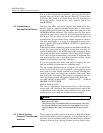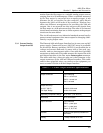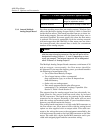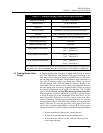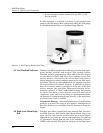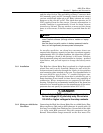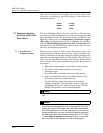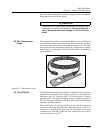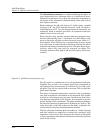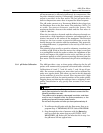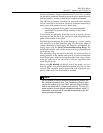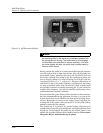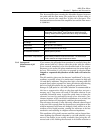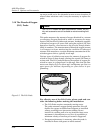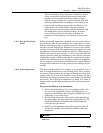
4220 Flow Meter
Section 5 Options and Accessories
5-12
The dissociation constant is a number indicating the degree of
ionic dissociation for a substance after it is dissolved in water.
Dissociation constants vary widely for substances depending on
the nature of the substance’s chemical bonds. Ionic salts tend to
have higher constants.
Each number on the pH scale between 7 and 0 equals a tenfold
increase in H
+
ion. Each number between 7 and 14 equals a
tenfold decrease of H
+
ion. pH measurements of wastewater are
commonly made to monitor the effect of treatment chemicals
added to raise or lower the pH.
Water that has been used for various industrial processes may
deviate substantially from 7. Chemicals are often added to the
water to bring the pH close to that of neutral water, which is 7.
For example, if the effluent has a concentration of heavy metal
ions, they must be removed before discharge. Raising the pH of
solutions containing transition-metal ions will cause them to pre-
cipitate, where they can easily be removed as sludge. The
resultant solution will be high in pH and will require acid to neu-
tralize it.
Figure 5-3 pH Probe (with protective cap)
The pH probe is a combination of two electrochemical half-cells.
Together they provide a low-voltage signal that corresponds to
the hydrogen-ion concentration of a solution. If you look at the
pH probe, you will see a glass bulb on one end. This is called the
glass mono electrode.
The glass is of special composition, sensitive only to hydrogen
ions, and is exposed to the solution to be measured. The specific
sensitivity to hydrogen ions prevents interference from other
ions that may be present in the solution. It is essential to prevent
grease fouling of this membrane. The glass membrane produces
an electrical potential proportional to hydrogen ion activity. The
other electrode, called the reference electrode, completes the
circuit between the glass electrode and the solution.
The Isco pH probe combines both electrodes in a single housing
and also contains an amplifier to reduce the extremely high
impedance of the circuit. This improves the reaction of the probe
to stray capacitance and reduces interference caused by electrical
noise in the vicinity.



